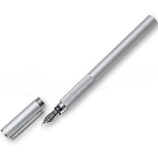Regular readers of this blog know that I have been exploring the many recent media distribution developments that hold out the possibility of eventually “cutting the cord”, which in my case might mean discontinuing a monthly subscription to DirecTV. (Others who are thinking of becoming a cord-cutter might discontinue a monthly subscription to a channel lineup with Comcast or Time-Warner cable or Dish network.) Hulu, HBO Now, Netflix, Amazon Prime, CBS All Access … they each offer a taste of OTT (Over The Top), meaning, a way to get what you want using nothing more than an Internet connection. Each involves some monthly fee paid to the service provider.
One of the areas of anxiety for some would-be cord-cutters is “will I be able to see my favorite sporting events?”
It’s one thing to wonder “what if I were to miss an episode of Big Bang Theory?” If there were to be some mixup or problem viewing the episode, you could always watch it later. Life does not end if a person is forced to watch an episode of a sitcom a day later than originally planned. But for many sports fans, the prospect of “watching it later” if something were to go wrong is just unacceptable.
Which raises the question of the Super Bowl. Can a cord-cutter watch today’s Super Bowl? If so, what does it cost? How do I do it?
The answer surprised me when I learned it. The answer is, anybody (anybody in the US, at least) with an Internet connection can watch the Super Bowl. They can watch it for free!
Amazon Fire TV. If you have a Fire TV box, or Fire TV stick, just download the CBS Sports app and run it. You will get to see the Super Bowl for free.
Roku. Same deal. If you have a Roku box or Roku stick, just download the CBS Sports app and run it. You will get to see the Super Bowl for free.
Chromecast. Same thing.
Android tablets and Android TV. Same thing.
iPads and Apple TV. Same thing.
XBox One. Same thing.
It’s pretty clear that the NFL and CBS would rather get the largest possible number of eyeballs than try to charge a few bucks for the use of the app.
Keep in mind that if you use this app instead of watching the Super Bowl through your local CBS television broadcaster, you won’t see local ads. It’s interesting to wonder how CBS will fill those advertising time slots that usually are set aside for local ads.
The local CBS television broadcasters probably won’t like this OTT offering very much, since it could cut into their eyeball count.
 A radio controlled wristwatch contains a sensitive AM radio receiver that picks up radio transmissions from a government time standard such as WWVB. WWVB transmits digitally coded time signals on 60 kHz. A watch or clock equipped to receive the WWVB signal can synchronize itself to the government time standard and thus can be consistently quite accurate.
A radio controlled wristwatch contains a sensitive AM radio receiver that picks up radio transmissions from a government time standard such as WWVB. WWVB transmits digitally coded time signals on 60 kHz. A watch or clock equipped to receive the WWVB signal can synchronize itself to the government time standard and thus can be consistently quite accurate.




